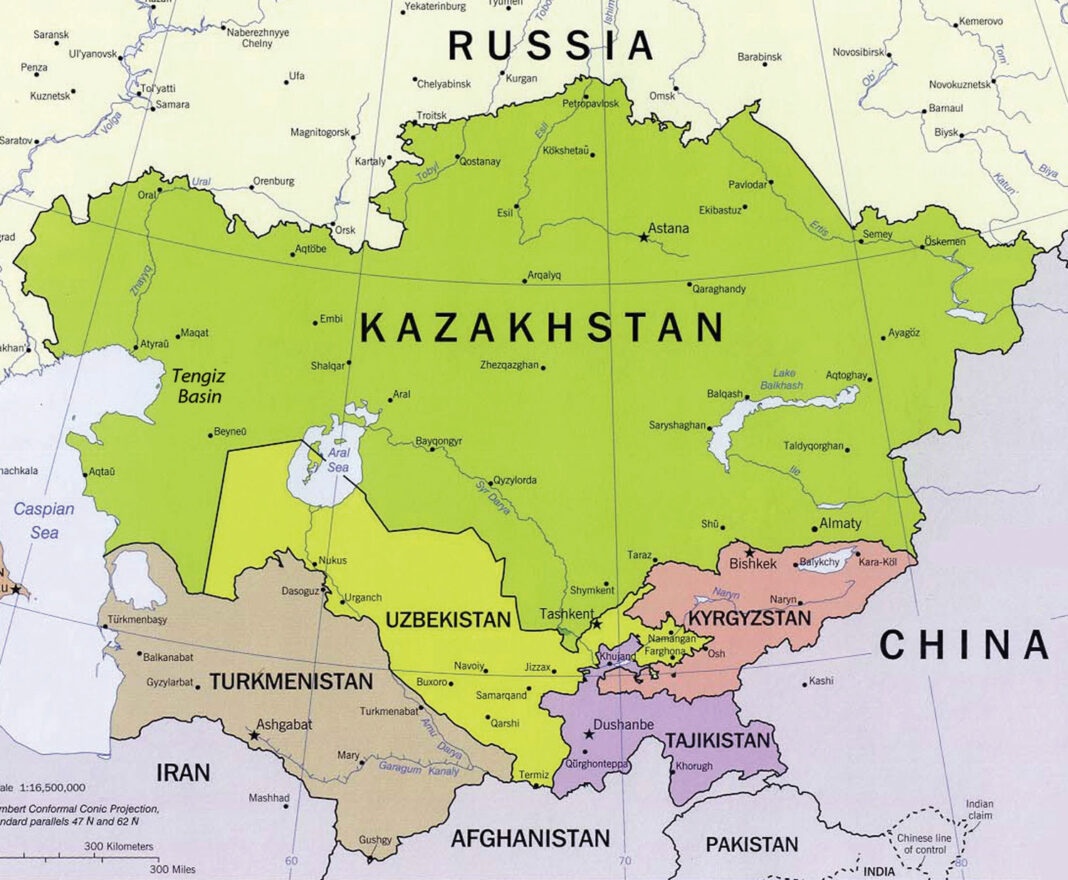A Region of Unclaimed Riches
Central Asia has emerged as a critical battleground for global powers, each seeking control over its vast energy resources, strategic location, and rare minerals. The region, which includes Kazakhstan, Uzbekistan, Turkmenistan, Kyrgyzstan, and Tajikistan, has long been known for its untapped oil and gas reserves. In recent years, technological advancements have further revealed its potential in critical minerals, essential for modern industries.
Historically, Central Asia was at the center of the “Great Game,” a strategic rivalry between Britain and Russia in the 19th century. Back then, the competition was focused on land control and preventing territorial expansion. However, in today’s world, the race is about economic dominance, energy security, and industrial technology. The fight for influence is not about military occupation but about securing access to Central Asia’s hydrocarbon reserves and mineral deposits.
Kazakhstan and Uzbekistan have already signed agreements with China for oil exploration. Turkmenistan, which holds the fourth-largest natural gas reserves in the world, supplies gas to Europe. However, the much-anticipated Turkmenistan-Afghanistan-Pakistan-India (TAPI) gas pipeline project has faced continuous delays for almost two decades due to political and technical challenges. Unconfirmed reports suggest that Turkmenistan is now considering partial development of the project, signaling a shift in regional energy strategies.
Technology and Infrastructure Race
In the last two decades, rapid digitalization and advancements in information technology have transformed global industries. The demand for rare minerals has surged as modern economies become more dependent on high-tech industries. Countries like the US, the EU, China, and Japan are actively seeking access to these critical resources to maintain their technological edge.
China enjoys a natural advantage in this competition due to its geographical proximity to Central Asia. It shares land borders with Kazakhstan, Kyrgyzstan, and Tajikistan, allowing it to establish strong economic and transportation ties with these nations. China has already built railway connections with Kazakhstan, Kyrgyzstan, and Uzbekistan, facilitating the movement of goods and resources. The China-Kyrgyzstan-Uzbekistan Railway project is further strengthening these links.
Another ambitious initiative, the Five Nations Railway Corridor, aims to connect China with Tajikistan, Kyrgyzstan, Afghanistan, and Iran. If completed, this railway will provide China with uninterrupted access to Central Asia’s vast energy and mineral wealth. These developments have enabled China to expand its influence in the region, making it a dominant player in trade and infrastructure.
Russia, which has deep historical and cultural ties with Central Asia, has been actively working to maintain its influence. Since the Soviet era, Russia has been a major force in the region, particularly in the energy and mining sectors. Today, Russia continues to play a key role in developing nuclear energy projects and mineral extraction agreements with several Central Asian countries. Both China and Russia have positioned themselves as crucial partners for the region, ensuring that they retain a strong presence in its economic and strategic affairs.
US and EU Push for Influence
Recently, the United States and the European Union have intensified their efforts to engage with Central Asian countries. The US has focused on securing access to rare minerals that are vital for industries such as defense, electronics, and clean energy. Reports indicate that American officials have been quietly meeting with Central Asian leaders to discuss mining and energy partnerships. The US aims to establish long-term agreements that will reduce its dependence on China for critical mineral supplies.
Meanwhile, the European Union has taken decisive steps to strengthen its presence in Central Asia. High-level EU officials have visited Turkmenistan, Uzbekistan, and Kazakhstan to discuss energy cooperation, trade, and infrastructure projects. The EU is particularly interested in developing the Trans-Caspian International Transport Route (TITR), a major transport network connecting Central Asia with Europe. The project has received a commitment of 10 billion Euros to enhance regional connectivity and facilitate trade.
The competition for Central Asia is no longer just about economic gains—it is about shaping the future of global energy, technology, and industrial production. As China and Russia continue to expand their foothold in the region, the US and the EU are making strategic moves to counterbalance their influence. Central Asia has become the epicenter of a modern geopolitical struggle, where global powers are racing to secure their place in a rapidly changing world.

